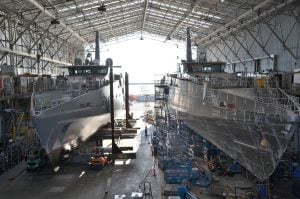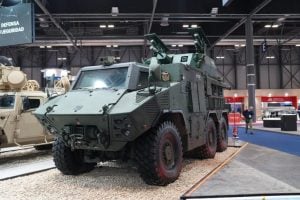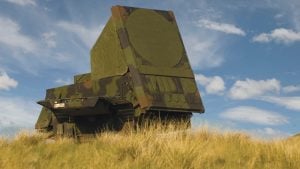Convocation Ceremony of TES 33 Course MCEME
- Convocation Ceremony of TES 33 Course of MCEME Secunderabad will be conducted at 9 AM today. Interested candidates can watch it live in YouTube.
AFMC conducted 4-day Online Training Course on COVID-19
- Armed Forces Medical Services conducted a four-day online training course on Covid-19. Medical Officers from Cambodia, Myanmar, Laos, and Vietnam shared knowledge & best practices to fight Covid.
Raksha Mantri Shri Rajnath Singh e-inaugurates six strategic bridges in Jammu & Kashmir
- Ushering in a new revolution in the connectivity of roads and bridges in sensitive border areas close to the International Border (IB) and Line of Control (LoC) in Jammu and Kashmir, Raksha Mantri Shri Rajnath Singh dedicated six major bridges to the nation through video conferencing from here today. These bridges of strategic importance were completed by the Border Roads Organisation (BRO) in a record time.
- Raksha Mantri congratulated all ranks of BRO for completing the works of six bridges in record time and complimented them for contributing towards nation building by working in the most difficult terrain and weather conditions. He said that roads and bridges are the lifeline of any nation and play a vital role in the socio-economic development of far flung regions. Reiterating the Central Government’s commitment to prioritise development activities in J&K, he said that our Prime Minister Shri Narendra Modi is regularly monitoring the progress of these projects and adequate funds are being provided for their timely execution.
- Roads in the border areas are not only strategic strengths, but also act to connect remote areas with the mainstream. In this way, be it a strategic necessity of the Armed Forces or other development work related to health, education, trade, all these are possible only with connectivity, he added.
- Thanking the people of Jammu and Kashmir for their cooperation, Shri Rajnath Singh said, “I am sure that the construction of modern roads and bridges will bring prosperity to the region. Our government is committed to promoting infrastructure on our borders and necessary resources will be provided for this. Our government has a keen interest in the development of Jammu and Kashmir. Keeping in mind the need of the people of Jammu and Kashmir and Armed Forces, many other development works are also in the pipeline, which will be announced in due time. About 1,000-kilometre long roads are currently under construction in Jammu region.”
- Raksha Mantri acknowledged that over the last two years, with the use of latest technologies and state-of-the-art equipment the BRO has done cutting of over 2,200 kilometres about 4,200 kilometres of roads surfacing and about 5,800 metres of permanent bridges have been constructed.
- He assured that the Government has ensured that sufficient resources are provided to the BRO for the construction of strategic roads.
- Despite the COVID-19 epidemic, the Government will not let the resources of BRO fall short. Also, the ministry will take care of the facilities of BRO’s engineers and personnel, he added.
- The six bridges were inaugurated in the presence of Minister of State (MoS) (Independent Charge) and MoS Prime Minister’s Office, Ministry of Personnel, Public Grievances & Pensions, Department of Atomic Energy and Department of Space Dr Jitendra Singh. Member of Parliament, Jammu Shri Jugal Kishore Sharma was present on the site through video link.
- The two bridges on the Tarnah Nallah in Kathua District and four bridges located on Akhnoor-Pallanwala road in Akhnoor/Jammu district have spans ranging from 30 to 300 metres and were constructed at a total cost of Rs 43 crores. These bridges constructed by Project Sampark of the BRO will facilitate movement of Armed Forces in this strategically important sector and will also contribute towards the overall economic growth of remote border areas.
- It is apparent that there has been a major surge in outcomes delivered by the BRO in the last few years. This is evident from the fact that BRO has executed about 30 per cent more works in the financial year (FY) 2019-20 as compared to FY 2018-19. This has happened because of adequate budgetary support from the Government and due to the effect of structural reforms and focussed/dedicated efforts by the BRO.
- The annual budget of the BRO that varied from Rs 3,300 crore to Rs 4,600 crore in the FY 2008-2016, saw a substantial rise to Rs 8,050 crore in FY 2019-2020. With focus of the Government in improving infrastructure in border areas, the budget for FY 2020-2021 is likely to be Rs 11,800 crore. This will give a major boost to ongoing projects and will expedite the construction of strategic roads, bridges, and tunnels along our northern borders.
- Speaking on the occasion, Director General of BRO Lt Gen Harpal Singh underlined the contribution of BRO to nation building and thanked the Raksha Mantri for his continuous guidance and support while expressing confidence that the BRO shall continue to strive towards meeting laid down targets in line with our overall national strategic objectives set forth by the Government.
- Chief of Army Staff Gen M M Naravane, Defence Secretary Dr Ajay Kumar, DG BRO Lt Gen Harpal Singh at Delhi and along with senior Army and Civil Administration officials on site were present on the occasion.
Indian Navy Completes “Operation Samudra Setu”
- Operation Samudra Setu, which was launched on 05 May 2020 as part of the national effort to repatriate Indian citizens from overseas during the COVID-19 pandemic has culminated after successfully bringing 3,992 Indian citizens back to their homeland by sea.
- Indian Naval Ships Jalashwa (Landing Platform Dock), and Airavat, Shardul and Magar (Landing Ship Tanks) participated in this operation which lasted over 55 days and involved traversing more than 23,000 kilometres by sea.
- Indian Navy has previously undertaken similar evacuation operations as part of Operation Sukoon in 2006 (Beirut) and Operation Rahat in 2015 (Yemen).
- The COVID-19 pandemic has had significant impact on ships and seafarers due to the compact environment and forced ventilation systems onboard ships. It was in these trying times and difficult conditions that the Indian Navy took up the challenge to evacuate our distressed citizens from overseas.
- The greatest challenge for the Indian Navy was to avoid any incident of outbreak of infection onboard the ships during the evacuation operation. Rigorous measures were planned and medical/ safety protocols unique to the operating environment of ships were implemented. These were strictly followed onboard the ships undertaking Op Samudra Setu resulting in the safe return of 3,992 of our citizens to their homeland.
- Op Samudra Setu was undertaken utilising Indian Naval ships best suited for the operation, catering for COVID-19 related social distancing norms vis-à-vis medical arrangements and carrying capacity. Ships used for the operation were specially provisioned and the Sick Bay or the clinic onboard was especially equipped with COVID-19 related equipment and facilities.
- Women Officers and military nursing staff were also embarked for the women passengers. Basic amenities and medical facilities were provided to all evacuees during sea passage on these ships. One of the expectant mothers who undertook passage on Jalashwa, Mrs Sonia Jacob, also gave birth to a baby boy within a few hours of reaching Kochi on International Mother’s Day.
- Along with other Government agencies, the Indian Navy has also been at the forefront of national efforts to assist our citizens. Indian Naval IL-38 and Dornier aircraft have been used for ferrying of doctors and COVID-19 related material across the country. Indian Naval personnel also innovated various customised equipment such as Personnel Protection Equipment NavRakshak, hand-held temperature sensors, assisted respiratory system, 3-D printed face shield, portable multi-feed oxygen manifold, ventilators, air-evacuation stretcher pod, baggage disinfectants etc. Most of these innovations were carried onboard the ships undertaking Op Samudra Setu and niche equipment was also provided to host countries from where evacuation was undertaken.
- Indian Navy utilised its amphibious sea-lift ships for Op Samudra Setu, which has reinforced the flexibility and reach of these multi-faceted platforms. Whilst Jalashwa, Magar, Airavat and Shardul were undertaking Op Samudra Setu, another Landing Ship (Tank) Kesari undertook ‘Mission SAGAR’, carrying 580 tonnes of food aid and medical stores including ayurvedic medicines to Maldives, Mauritius, Madagascar, Comoros Islands and Seychelles, covering over 14,000 km in 49 days. One medical team each was also deployed at Mauritius and Comoros Island as part of the mission.
- The 3,992 Indian citizens evacuated during Op Samudra Setu were disembarked at various ports and entrusted to the care of respective state authorities. This operation was undertaken by the Indian Navy in close coordination with Ministry of External Affairs, Home Affairs, health and various other agencies of the Government of India and State Governments.
| Ship | Date Embarked | Port of Embarkation | Number of Citizens | Date Disembarked | Port of Disembarkation |
| Jalashwa | 8 May | Malѐ | 698 | 10 May | Kochi |
| Magar | 10 May | Malѐ | 202 | 12 May | Kochi |
| Jalashwa | 15 May | Malѐ | 588 | 17 May | Kochi |
| Jalashwa | 1 June | Colombo | 686 | 2 June | Tuticorin |
| Jalashwa | 5 June | Malѐ | 700 | 7 June | Tuticorin |
| Shardul | 8 June | Bandar Abbas | 233 | 11 June | Porbandar |
| Airavat | 20 June | Malѐ | 198 | 23 June | Tuticorin |
| Jalashwa | 25 June | Bandar Abbas | 687 | 1 July | Tuticorin |
French Army receives new Griffon multi-role armoured vehicles
- Thirteen new Griffon VBMR (véhicules blindés multi-rôles) armoured vehicles were handed over to the 21st Marine Infantry Regiment (21st RIMa) on 9 July by the French Defence Procurement Agency.
- The new generation of combat vehicles is based on a 6×6 commercial all-terrain truck chassis will replace the ageing fleet of Véhicule de l’Avant Blindé (VAB) 4×4 armoured personnel carriers.
- The French DGA unveiled its plan to acquire a total of Griffon multi-role vehicles under its Scorpion programme in November 2014. A contractual agreement for the manufacture of the VBMR vehicles was signed in December 2014.
- Last summer, in July 2019, the first batch of vehicles was submitted to the French army by the DGA, in attendance of the French Army minister, Florence Parly. As a result, the production of the 92 Griffon required less than six months: it represents a real industrial challenge that permits to respond to Land Forces’ requirements.
- Overall, the SCORPION program plans the delivery of 1872 Griffon to the French army by the temporary company grouping EBMR. 936 vehicles will be presented until 2025 with all the maintenance and logistic support.
U.S. Army begins testing new self-propelled mortar system
- The new self-propelled mortar system is based on the chassis of 8×8 armoured vehicle. The rear section of its all-welded steel hull houses a large Nemo remote-controlled 120 mm mortar system with both direct and indirect fire capability. The system is manned by a crew of three including a driver, a commander, and a gunner.
- The U.S. Army seeks new solutions to provide Armoured and Stryker Brigade Combat Teams with rapid, precise indirect and direct fire capability where the operating crew is well protected, and their physical burden is significantly reduced.
- Last month, U.S. Army’s Combat Capabilities Development Command Armaments Center and Patria have signed a Cooperative Research and Development Agreement (CRADA) to determine feasibility of incorporating a turreted, breech-loaded 120 mm mortar weapon system in U.S. mortar carriers. The scope of the agreement is to assess the capabilities of Patria Nemo mortar system, its compatibility with U.S. mortar carrier weapon platforms and fire control systems as well as to evaluate the use of current U.S. 120 mm mortar ammunition in a breech-loaded mortar, such as Patria Nemo.
China completes withdrawal of troops from 3 areas; another round of talks expected today
- China’s People’s Liberation Army (PLA) on Thursday completed withdrawal of its troops from two more face-off sites in Gogra and Hot Springs in eastern Ladakh in line with a mutually agreed disengagement process with India even as the two countries are set to hold a fresh round of diplomatic talks today to further de-escalate the situation.
- As the first phase of the disengagement neared completion, external affairs ministry spokesperson Anurag Srivastava, at a media briefing, once again rejected China’s claim over Galwan Valley, but reiterated that India remained convinced of the need for maintenance of peace and tranquillity in the border areas and resolution of differences through dialogue.
- At the same time, he asserted that India is committed to ensuring its sovereignty and territorial integrity and that the Line of Actual Control (LAC) must be strictly respected and observed, saying it is the basis for peace and tranquillity in border areas.
- Government sources said the two sides are also expected to hold a fourth round of Corps commander level dialogue by early next week to finalise modalities for de-induction of troops by both sides at their rear bases in the high-altitude region.
UN makes its 3rd communication on Jammu and Kashmir public
- United Nations (UN) Special Rapporteurs have made public their third communication forwarded to India since the August 5, 2019 decision to revoke Jammu and Kashmir’s special status, expressing “grave concern over alleged excessive use of force, ill treatment during arrests and detentions”.
- Four UN Special Rapporteurs on torture and other cruel, inhuman or degrading treatment or punishment; on extra-judicial, summary or arbitrary executions; on minority issues; and on freedom of religion or belief — had forwarded a joint communication to India on May 4, 2010, and made it public recently, after 60 days of response time.
- “We would like to bring to the attention of Your Excellency’s Government information we have received concerning the continued deterioration of human rights conditions in J&K following severe restrictions imposed after 5 August 2019, in particular citing arbitrary detentions, violations to the prohibition of torture and ill-treatment and rights of persons belonging to minorities,” the communication reads.
- The first communication was forwarded to India by the UN on August 16, 2019 on “restrictions on freedom of expression and freedom of peaceful assembly”. The second was communicated on February 27 on alleged “mass crackdown targeting those expressing dissent against the decision taken” by the Central government.
- The UN urged the Indian government “to conduct a prompt and impartial investigation, if it has not done so already, into the allegations of arbitrary killings, torture and ill-treatment and to prosecute suspected perpetrators under articles 6 and of the International Covenant on Civil and Political Rights (ICCPR), and articles 7 and 12 of the Committee Against Torture (CAT).
REVIEW QUESTIONS
- Which among the following ships of the Indian Navy have made more than one trip of embarkation of Indian citizens from abroad?
- INS Magar
- INS Shardul
- INS Airavat
- INS Jalashwa
ANSWER: D
- Medical Officers from which of the following nation did not participate in the four-day online training course on Covid-19 conducted by AFMC?
- Vietnam
- Philippines
- Cambodia
- Myanmar
ANSWER: B
- ICCPR full form:
- International Covenant on Civil and Political Rights
- International Committee on Civil and Political Rights
- International Covenant on Commerce and Political Rights
- International Committee on Commerce and Political Rights
ANSWER: A



















